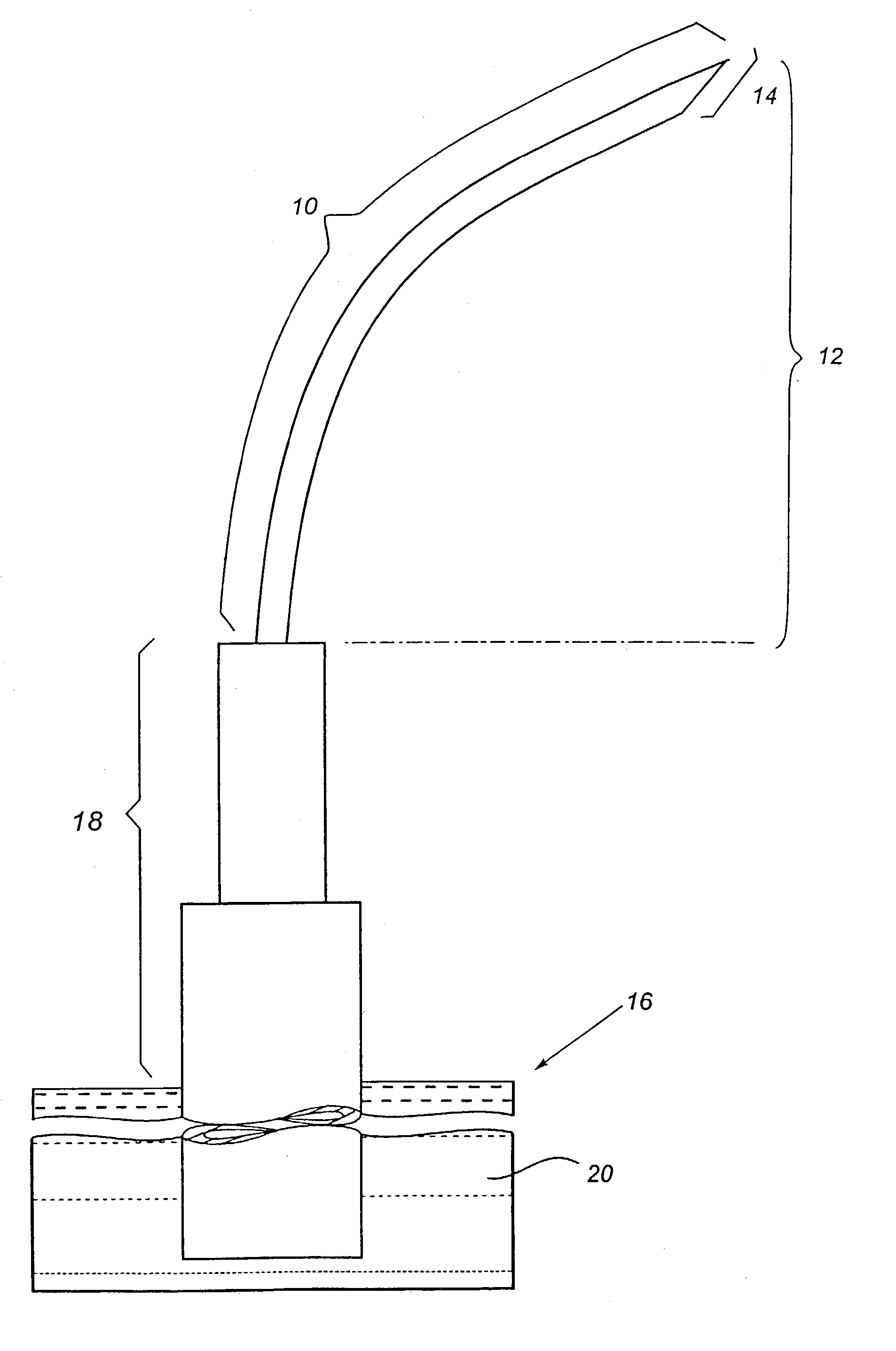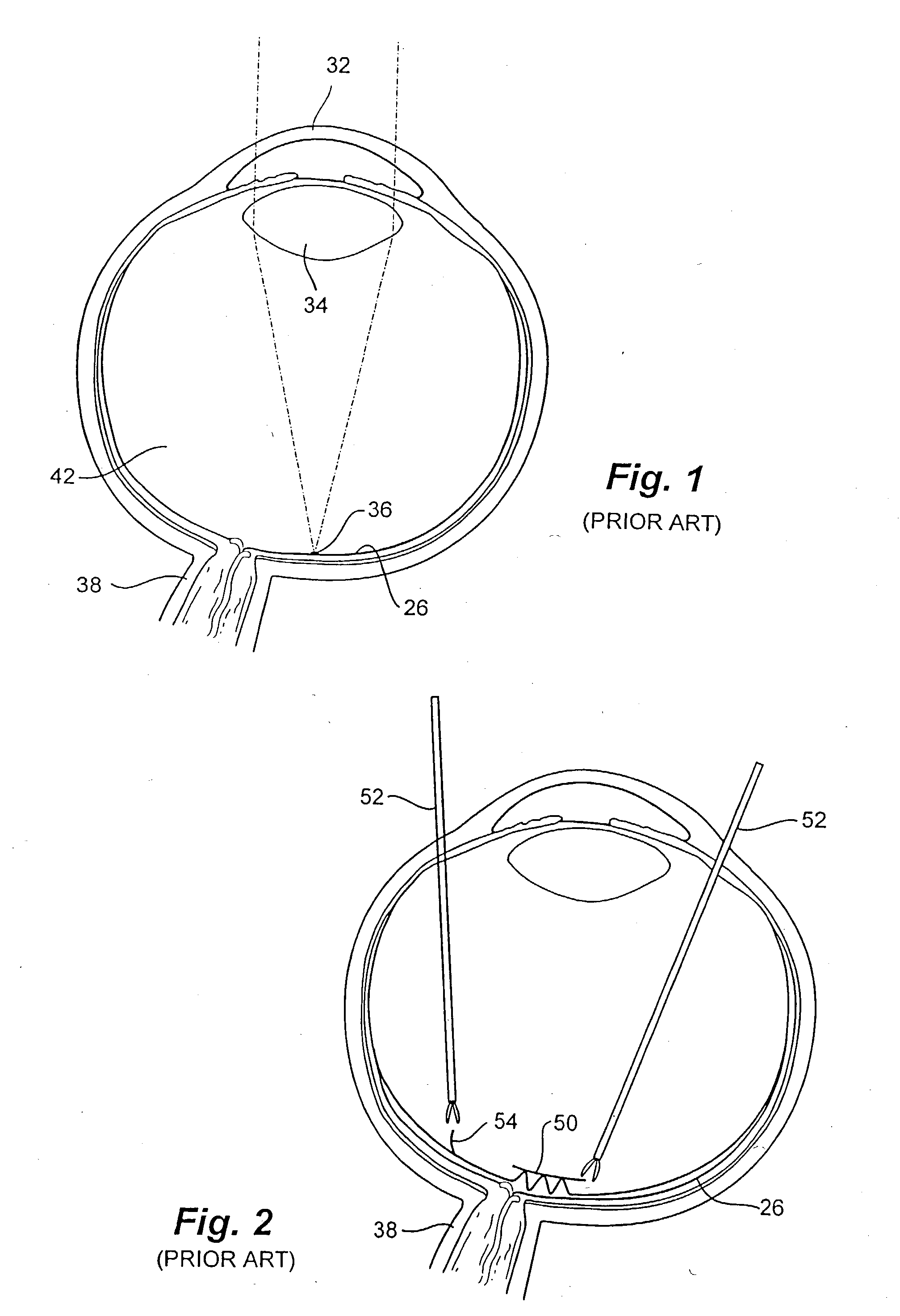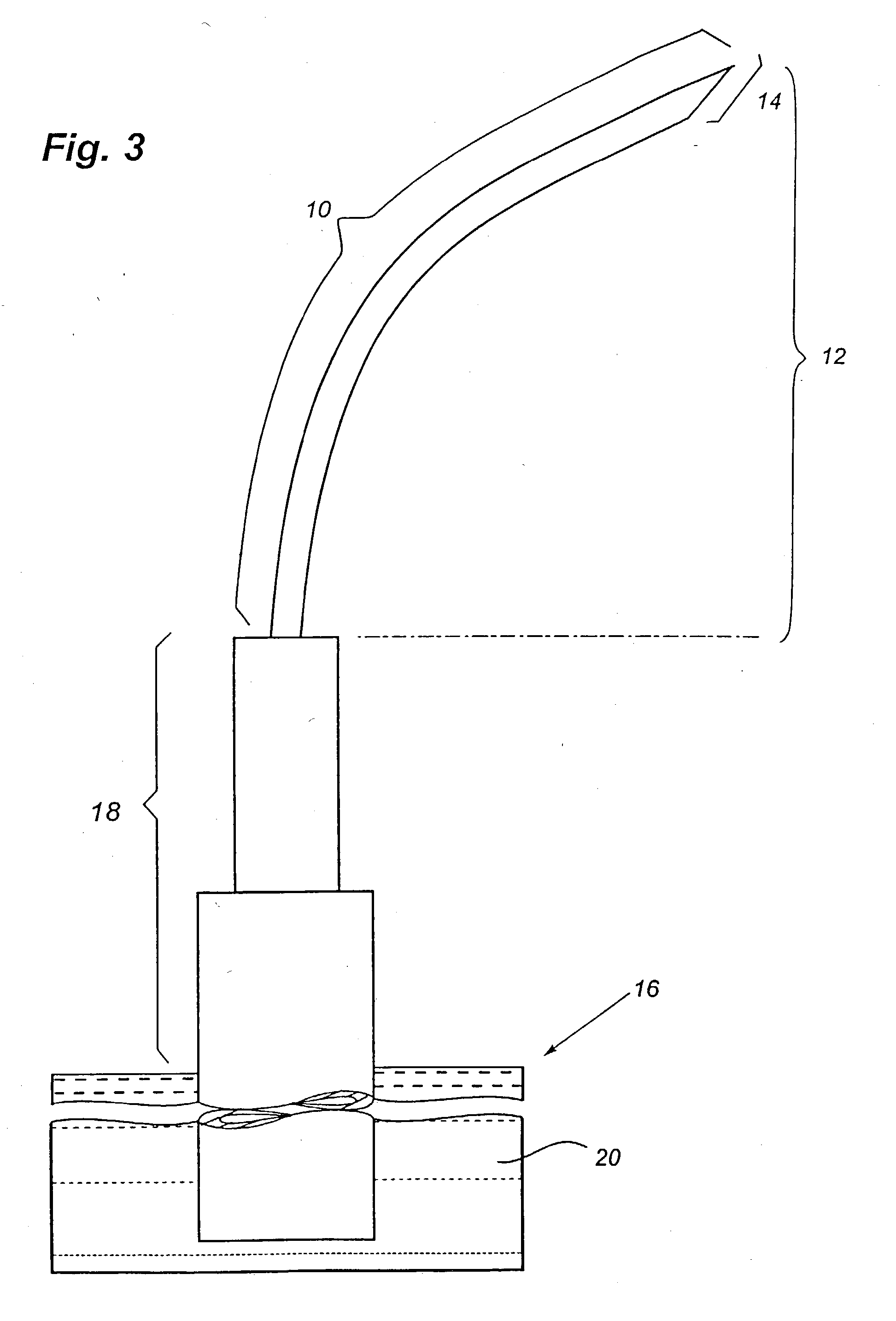Apparatus for performing surgery inside the human retina using fluidic internal limiting membrane (ILM) separation (FILMS)
a technology of internal limiting membrane and apparatus, which is applied in the field of apparatus for performing surgery inside the human retina using fluidic internal limiting membrane (ilm) separation, can solve the problems of loss of fine vision to the level of legal blindness, limiting visual recovery, and legal blindness
- Summary
- Abstract
- Description
- Claims
- Application Information
AI Technical Summary
Problems solved by technology
Method used
Image
Examples
Embodiment Construction
[0042] It must be noted that as used herein and in the appended claims, the singular forms "a" "and" and "the" include the plural references unless the context clearly dictates otherwise. Thus, for example, reference to "a formulation" includes mixtures of different formulations and reference to "the method of treatment" includes reference to equivalent steps and methods known to those skilled in the art, and so forth.
[0043] Unless defined otherwise, all technical and scientific terms used herein have the same meaning as commonly understood by one of ordinary skill in the art to which this invention belongs. Although any methods and materials similar or equivalent to those described herein can be used in the practice or testing of the invention, the preferred methods and materials are now described. All publications mentioned herein are fully incorporated herein by reference.
PUM
 Login to View More
Login to View More Abstract
Description
Claims
Application Information
 Login to View More
Login to View More - R&D
- Intellectual Property
- Life Sciences
- Materials
- Tech Scout
- Unparalleled Data Quality
- Higher Quality Content
- 60% Fewer Hallucinations
Browse by: Latest US Patents, China's latest patents, Technical Efficacy Thesaurus, Application Domain, Technology Topic, Popular Technical Reports.
© 2025 PatSnap. All rights reserved.Legal|Privacy policy|Modern Slavery Act Transparency Statement|Sitemap|About US| Contact US: help@patsnap.com



